|
|
Alexander Goehr (Composer) |
|
Born: August 10, 1932 - Berlin, Germany
Died: August 25, 2024 - Cambridgeshire, England |
|
The prominent German-born English composer and pedagogue, (Peter) Alexander Goehr, is the son of the conductor and Arnold Schoenberg pupil Walter Goehr. In his early twenties he emerged as a central figure in the Manchester School of post-war British composers. In 1955-1956 he joined Oliver Messiaen's master-class in Paris. Although in the early 1960ís Goehr was considered a leader of the avant-garde, his oblique attitude to modernism - and to any movement or school whatsoever - soon became evident. In a sequence of works including the Piano Trio (1966), the opera Arden Must Die (1966), the music-theatre piece Triptych (1968-1970), the orchestral Metamorphosis/Dance (1974), and the String Quartet No. 3 (1975-1976), Goehr's personal voice was revealed, arising from a highly individual use of the serial method and a fusion of elements from his double heritage of A. Schoenberg and Messiaen. Since the luminous 'white-note' Psalm IV setting of 1976, Goehr has urged a return to more traditional ways of composing, using familiar materials as objects of musical speculation, in contrast to the technological priorities of much present-day musical research. |
|
Life and Works |
|
Alexander Goehr was born in Berlin, and his family moved to Britain when he was only a few months old. Alexander came from an extremely musical family: his mother Laelia was a classically trained pianist, and his father was a A. Schoenberg pupil and pioneering conductor of A. Schoenberg, Messiaen (he conducted the UK premiere of the Turangalîla Symphony in 1953) and Monteverdi. As a child, Alexander grew up in a household permanently populated by composers, including Mátyás Seiber and Michael Tippett. Although these premises point all too clearly to Goehr's future as a composer, his efforts as a composer were not much encouraged by his father, and he initially he proposed to study classics at Oxford University, but went instead to study composition at the Royal Manchester College of Music, with Richard Hall.
In his composition classes Alkexander Goehr became friends with young composers Peter Maxwell Davies and Harrison Birtwistle and pianist John Ogdon, with whom he founded the New Music Manchester Group. A seminal event in Goehr's development was hearing the UK premiere of Messiaen's Turangalîla Symphony, conducted by his father, Walter Goehr. The interest in non-Western music (for instance Indian raga) sparked by the meeting with Messiaen's music combined with the interest in medieval modes shared with Peter Maxwell Davies and Harrison Birtwistle largely influenced Goehr's first musical imaginings. His first acknowledged compositions date from these years: Songs for Babel (1951) and the Sonata for Piano, Op. 2, which was dedicated to the memory of Prokofiev, who had died that year.
In 1955, Alexander Goehr left Manchester to go to Paris and study with Messiaen, and he remained in Paris until October 1956. The music scene of Paris would make a great impression on Goehr, who became good friends with Pierre Boulez and was involved in the serialist avant-garde movement of those years. Goehr experimented with P. Boulez' technique of bloc sonore, particularly in his first String Quartet of 1956-1957. P. Boulez was a sort of mentor to Goehr in the late 1950ís, programming his new compositions in his concerts at the Marigny Theatre in Paris. It was not meant to last. Eventually Goehr's sensibility parted from P. Boulez' serialism. What disturbed Goehr was mainly his perception that by the mid-1950ís, serialism had become a cult of stylistic purity, modelling itself on the twelve-tone works of Anton Webern.
Upon his return to Britain, Alexander Goehr experienced a breakthrough as a composer with the performance of his cantata The Deluge in 1957 under his father's baton. This is a big, ambitious work inspired by the writings of Sergei Eisenstein - one of Goehr's many extra-musical sources of inspiration. The soundworld could be seen to have derived from the twelve-tone cantatas of A. Webern, but it implicitly strives for the imposing harmonic tautness and full sonority of Prokofiev's Eisenstein cantatas. The genre of the cantata is one that Goehr would explore over and over again throughout his career. Indeed, following the success of The Deluge, Goehr was commissioned a new cantata, Sutter's Gold for choir, baritone and orchestra. However, the new work proved highly unpopular particularly with the singers, who found it impossibly difficult to perform. Indeed, the difficulty of performance is one of the reasons why Sutter's Gold was dismissed by critics upon its performance at the Leeds festival in 1961. This débacle, however, had a constructive impact on Goehr: rather than dismissing criticism as the mere result of incompetence on the part of critics and performers, he genuinely faced the questions of the position of the avant-garde composer and his music:
Despite this, Alexander Goehr continued to compose choral works. Encouraged by his friendship with the choral conductor John Alldis, who was strongly committed to new music, Goehr composed his Two Choruses in 1962, which used for the first time the combination of modality and serialism which was to remain his main technical resource for the next 14 years. His search for a model of serialism that could allow for expressive freedom led him to his famous Little Symphony, Op. 15 (1963). It is a memorial to Goehr's conductor/composer father, who had unexpectedly died, and it is based upon a chord-sequence subtly modelled upon (but not quoting) the "Catacombs" movement from Mussorgsky's Pictures at an Exhibition(Goehr senior had made a close harmonic analysis of this unusual movement). This flexible approach to serialism, integrating harmonic background with bloc sonore and modality is very representative of the type of writing that Goehr developed as an alternative to the strictures of total serialism. It is no coincidence that P. Boulez - who had earlier facilitated the performance of Goehr's music - refused to programme Little Symphony: by 1963 Goehr had neatly departed from the style of his Parisian days.
The 1960ís also see Alexander Goehr founding the Wardour Castle Summer School with Peter Maxwell Davies and Harrison Birtwistle in 1964, and most importantly, the beginning of Goehr's preoccupation with opera and music theatre. In 1966 he wrote his first opera, Arden Must Die (Arden Muss Sterben), a thoroughly Brechtian setting of a Jacobean morality play which had uncomfortably contemporary political and social resonances. Goehr's striking setting of a text composed by Erich Fried in rhyming duplets makes the most of the idea of simple musical ideas that are continually distorted to a sinister and sarcastic effect.
In 1967 Alexander Goehr founded the Music Theatre Ensemble, and in 1971 he completed a three-part cycle for music theatre - Tryptich - made up of three works: Naboth's Vineyard (1968) and Shadowplay (1970) were both explicitly written for Music Theatre Ensemble while the later Sonata about Jerusalem (1971) was commissioned by Te, Jerusalem and performed by the Israel Chamber Orchestra and Gary Bertini. The end of the 1960ís also sees the beginning of a string of prestigious academic appointments for Goehr. In 1968-1969 he was composer-in-residence at the New England Conservatory of Music, Boston, and went on to teach at Yale University as an associate professor of music. Goehr returned to Britain as visiting lecturer at Southampton University (1970-1971). In 1971 he was appointed West Riding Professor of Music at the University of Leeds. Goehr left Leeds in 1976 when he was appointed Professor of Music at Cambridge University where he taught until his retirement in 1999. In Cambridge he became fellow of Trinity Hall.
The year of Alexander Goehr's appointment at Cambridge coincided with a turning point in his output. In 1976, Goehr wrote a famous white-note setting of Psalm IV. The simple, bright modal sonority of this piece marked a final departure from post-war serialism and a commitment to a more transparent soundworld. Goehr found a way of controlling harmonic pace by fusing his own modal harmonic idiom with the long abandoned practice of figured bass - thus achieving a highly idiosyncratic fusion of past and present.
The output of the ensuing twenty years testified to Goehr's desire to use this new idiom to explore ideas and genres that had already become constant features of his work, such as the exploration of symphonic form: Goehr returned to symphonic form in his Sinfonia (1979) and Symphony with Chaconne (1987). Yet these years' output is disseminated most notably with a great number of ambitious vocal scores.
A common feature of many of the vocal compositions of these years is the choice of subjects that function as allegories for reflection upon socio-political themes. The Death of Moses (1992) uses Moses' angry refusal to die as an allegory for the destiny of the victims of the Holocaust; while the cantata Babylon the Great is Fallen (1979) and the opera Behold the Sun (1985) - for which Babylon the Great can be considered to be a sketch study - both explore the themes of themes of violent revolution via the texts from the Anabaptist uprising in Munster of 1543. There are also non-political works such as the Sing, Ariel, that recalls Messiaen's stylized birdsong and sets a kaleidoscope of English poetry, and the opera Arianna (1995) - written on a Rinuccini libretto for L'Arianna, a lost opera by Monteverdi - is a typically idiosyncratic exploration of the soundworld of Italian Renaissance. Indeed, Goehr's engagement with Monteverdi's music dates back to the cantata The Death of Moses, which he described as "Monteverdi heard through Varèse". Arianna is also the piece that most overtly displays Goehr's intent to turn his reinvention of the past into a musical process that the audience can hear and identify:
Although the last ten years of Alexander Goehr's output have not received the generous coverage (both in terms of academic writing and frequency of performance) of his previous work, they arguably represent the most interesting of Goehr's compositional phases. This last decade's output is heralded by the striking opera Kantan and Damask Drum of 1999, premiered at the Dortmund Opera. This opera consists in fact of two plays from the Japanese Noh theatre tradition, separated by a short kyogen humorous interlude. Typically for Goehr, the Japanese texts date back to the 15th century and have been adapted by the composer for setting. The lusciously tonal idiom does not indulge in orientalism, but rather the relationship between music and drama in Noh animates the whole work. Again, with Kantan and Damask Drum the search continues for an expressive synthesis; in this case, it is one of western and eastern, past and present.
In the following years, Alexander Goehr devoted himself almost exclusively to chamber music. This is perhaps a response to the difficulties he experienced in the staging of his operas: the limited amount of financial support needed for a chamber music performance allows for music and performance venues that stray off the beaten path while allowing the composer more control over the quality of the performance. Through the chamber music medium Goehr gains an unprecedented rhythmic and harmonic immediacy, while his music remains ever permeable by the music and imagery of other times and places: the Piano Quintet (2000) and the Fantasie for cello and piano (2005) are haunted by rich sonorities of a thoroughly Ravel-like quality.
The set of piano pieces Symmetries Disorder Reach (2007) is a barely disguised baroque suite haunted by the spirit of early Alban Berg. Marching to Carcassonne (2003) flirts with neoclassicism and Igor Stravinsky, and Manere for violin and clarinet (2008), based on a fragment of medieval plainchant, is a typical foray into the art of musical ornament. Also written in 2008 is Since Brass nor Stone for string quartet and percussion (2008), a memorial to Pavel Haas. Inspired by a Shakespeare sonnet, from which it borrows its title, this work is representative of the inventiveness of Goehr's recent chamber work. One reviewer described the soundworld of the work as 'hiccupping fugal patterns overlaid with intricate, delicate percussion [...] a magical garden of dappled textures' Goehr has recently returned to the operatic medium with the opera Promised End, based on Shakespeare's King Lear, which will be performed in 2010 by English Touring Opera. |
|
Musical Style |
|
All of Alexander Goehr's works are, in one way or another, studies in the synthesis of several, different elements. This is already apparent in his breakthrough piece, The Deluge (1957-19558), which is inspired by Eisenstein's notes for a film based on a writing by Leonardo da Vinci; in other words Goehr writes music about a director's notes for a film based on the writings of a painter! Similarly, his inspiration for new compositions have ranged from the formal proportions of a late L.v. Beethoven Piano Sonata (Metamorphosis/Dance, 1973-1974) to a painting by Goya (Colossus or Panic, 1990), to the sinister humour of Bertolt Brecht (Arden Must Die, 1966) or to the Japanese Noh theatre (Kantan and Damask Drum, 1999).
Another red-thread element of The Deluge is that it takes its cue from an unfinished project - Eisenstein never carried out this particular project. Goehr will return time and again to the idea of carrying out a synthesis of fragments or unfinished projects left by other artists, albeit in a metaphorical way: the cantata The Death of Moses resonates with LA. Schoenberg's unfinished Moses und Aron; the opera Arianna (1995) is the setting of the libretto of a lost opera by Monteverdi; and the posthumously published prose fragments by Franz Kafka lurk behind Das Gesetz der Quadrille (1979), Sur terre en líair (1997) and Schlussgesang (1990).
From a strictly technical musical level, Alexander Goehr's endeavour has long been that of unifying the contrapuntal rigor and motivic workings of the First Viennese School and Second Viennese School with a strong sense of harmonic pacing and sonority. It is indicative that Goehr should go to Paris not only to attend the classes of Messiaen at the Paris Conservatoire, but also to study counterpoint and serialism with A. Schoenberg scholar and composer Max Deutsch; even more indicative is the anecdote that Deutsch threw Goehr out of his house upon hearing that the young man intended to study with Messiaen as well as with him. Goehr's indebtedness to Messiaen is very strong, as is apparent in Goehr's lifelong commitment to modality as an integration to both serialism and to tonality, as well as his often bird-song inspired melodic writing, particularly in the cantata Sing, Ariel.
Alexander Goehr's interest in the musical past is far from an empty mannerism or a sign of musical conservatism, but rather an earnest, and constantly renewed exploration of his own musical roots. This attitude isconcisely expressed by Goehr's striking assertion that "all art is new and all art is conservative". Understood in this way, his musical imagination of the past can be traced to three fundamental sources:
Although Alexander Goehr's personal relationship to his father was not unproblematic, Walter Goehr had a determining influence on his son via his work as a conductor: the composers whose work Walter Goehr championed - A. Schoenberg, Claudio Monteverdi, Modest Mussorgsky, Olivier Messiaen - feature as a red-thread throughout Alexander Goehr's output. For instance, Goehr's A. Schoenberg uses the libretto of a lost opera by Monteverdi, Arianna abbandonata, and conjures up sonorities reminiscent of the Italian Renaissance. The quintet Five Objects Darkly (whose title is borrowed from a work by the painter Giorgio Morandi is a set of variations based on a musical fragment by Mussorgsky, and the earlier Little Symphony uses the chordal structure of Mussorgsky's Catacombs' from Pictures at an Exhibition as a harmonic backbone.
Walter Goehr had studied with A. Schoenberg and was constantly surrounded by high calibre composers such as Seiber, Tippett, and others. Goehr's strong sense of indebtment to this generation, particularly to A. Schoenberg, had a lot to do with his ambivalent reaction to the Darmstadt School avant-garde of the 1950ís (in which his friend and mentor P. Boulez was heavily involved).
Alexander Goehr's interest in these musics is surely part of his Schoenbergian heritage. Just like A. Schoenberg, Goehr refuses to view current composition as a practice that is independent of any musical tradition, but rather, he seeks in tradition the elements for the innovation of musical language. Alexander's search for a means of controlling structure and harmony in music led him in the late seventies to an innovating interpretation of the late Baroque practice of figured bass in conjunction with his personal blend of modality and serialism. This is exemplified in his setting of Psalm IV and the ensuing correlated works: Fugue and Romanza on the notes of the fourth Psalm (1976 and 1977, respectively). Goehr is also committed to the reinvention of classical forms such as the Symphony, the classical Concerto, and the Baroque Suite (from his Suite Op. 11 of 1961 right up to Symmeteries Disorder Reach of 2007). Further sources of inspiration are the treatises on musical ornamentation by Carl Philipp Emanuel Bach, and Monteverdi, whose synthesis of renaissance polyphony with the early Baroque move towards homophony and the control of harmony clearly mirrors Goehr's own commitment to a harmonically expressive serialist practice. |
|
Work (selection) |
|
Chamber:
Suite, Op. 11 (1961)
String Quartet No. 3, Op. 37 (1976)
...a musical offering (J.S.B. 1985)..., Op. 46 (1985)
Quintet "Five objects Darkly", Op. 62 (1996)
Idées Fixes for ensemble Op. 63 (1997)
Since Brass, nor Stone...fantasy for string quartet and percussion Op. 80 (2009)
Vocal:
The Deluge, cantata. Op. 7 (1957-1958)
Psalm IV, Op. 38a (1976)
Das Gesetz der Quadrille, Op. 41 (1979)
Sing Ariel, cantata, Op. 51 (1990),
The Death of Moses, cantata, Op. 53 (1992)
Orchestral:
Little Symphony, Op.15 (1963)
Metamorphosis/Dance, Op. 36 (1974)
Sinfonia, Op. 42 (1979)
Symphony with Chaconne, Op. 48 (1986)
Colossos or Panic for orchestra Op. 55 (1992)
Schlussgesang for orchestra Op. 61 (1996)
Opera:
Arden Muss Sterben (Arden Must Die), Op. 21 (1966)
Behold the Sun (1985)
Arianna, Op. 58 (1995)
Kantan and Damask Drum (1999)
Promised End (2008-2009)
Writings:
"The Theoretical Writings of Arnold Schoenberg". Proceedings of the Royal Musical Association vol. 100 (1973-1974), 85-96
Musical Ideas and Ideas about Music (London, 1978)
Finding the Key: Selected Writings of Alexander Goehr', ed. D. Puffett' (London: Faber and Faber, 1998)
'Schoenberg and Karl Kraus: The Idea behind the Music' [University of Southampton lecture, 1983]. Music Analysis vol. 4 (MarchĖJuly 1985), 59-71
'The Composer and His Idea of Theory: A Dialogue'. Music Analysis vol. 11, No. 2-3 (July October 1992), 143-175 |
|
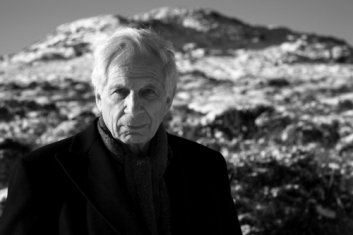
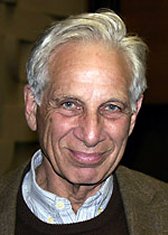
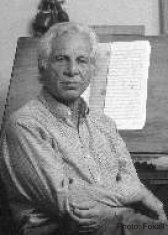
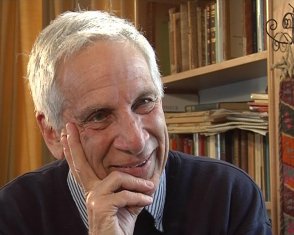
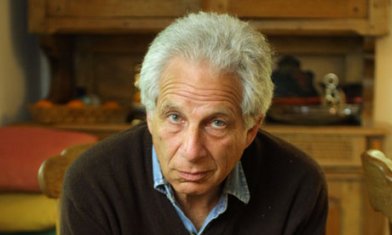
|
|
Sources:
Mostly Wikipedia Website (February 2013)
Contributed by Aryeh Oron (May 2013) |
|
Alexander Goehr : Short Biography | Bach-inspired Piano Works: Works | Recordings | Other Arrangements/Transcriptions: Works | Recordings |
|
Links to other Sites |
|
Alexander Goehr (Wikipedia)
Alexander Goehr - Stage Works (Opera and Music Theatre Archive)
A guide to Alexander Goehr's music (The Guardian)
Alexander Goehr (Logan Arts Management)
Alexander Goehr (Schott Music) |
|
Bibliography |
| |
|
|